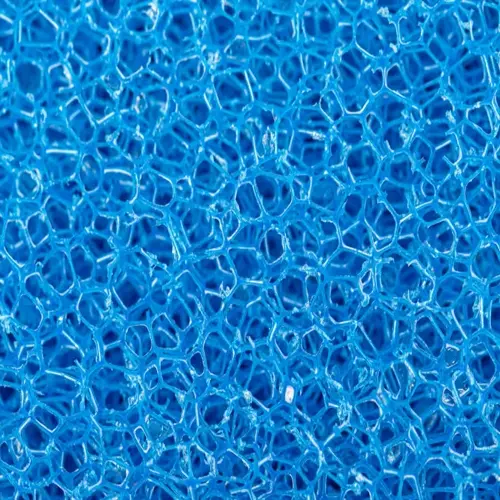Understanding Aquarium Water Parameters

Written by
Kailani Okoro
Reviewed by
Prof. Henry Webster, Ph.D.Continuous observation of aquarium water parameters prevents any buildup of invisible toxic compounds
Recognizing the different stages of the nitrogen cycle is a critical step to achieve stability in biological filtration
Three core parameters, pH, KH, and GH, work in a tortuous manner to contribute to aquatic health
Careful adjustment helps to prevent shocking the fish and upsetting biological filter balance
Saltwater systems have specific trace element management needs beyond the parameters needed for basic freshwater management
Once the common myths are explained, it helps owners utilize proper management techniques based on evidence, ecology and biology
Article Navigation
Grasping the aquarium water parameters is the foundation of every healthy aquatic environment. The measurable aspects, such as pH, ammonia, and temperature, will have a direct effect on fish health. Freshwater setups require testing differently from saltwater setups. Salinity and trace elements must be accounted for and monitored in saltwater systems.
It is more advantageous to concentrate on stability than on hunting for perfect numbers. A more conducive environment helps fish adapt better than fluctuating conditions do. I learned this when I was keeping reef tanks. Great stress is placed on aquatic life with sudden changes in parameters, rather than slightly elevated but steady readings.
Check the water level weekly, but refrain from making frequent adjustments. Fish prefer stability. My neon tetras breed successfully at a pH of 7.2, even when books say they need to be at 6.5. Regular monitoring is far more important to fish than achieving textbook values. Establish routines that maintain balance.
Water Testing Methods Compared
Liquid test kits have superiority over critical parameters like ammonia and nitrite. These are used in the fish cycle because of their accuracy. These will detect a change that digital means won't pick up. However, they do require more of your time, as the results will take approximately 10 minutes to read fully.
Test strips are effective for quickly checking established tanks. They cost less initially, making them a great choice for small aquariums. I use one once a week for my 10-gallon betta tank. Their limitation is evident in saltwater systems, where they again fail to detect calcium.
Digital meters provide fast pH and temperature readings. They are handy for larger reef tanks, which require constant monitoring and care. The initial capital expenses are amortized over time. I recommend them for tracking the alkalinity stability of coral systems. Keep in mind that calibration is crucial every week if you are seeking reliable data.
Use an appropriate aquarium size and method for testing purposes. Nano tanks produce possibly better test strips, while all reef systems demand the accuracy of digital devices. Liquid kits remain essential for testing in the event of a problem. Do not rely solely on one testing method. A combination of tools will be necessary for greater insight into water parameters.
New Aquariums
- Test ammonia and nitrite every two days during initial cycling period
- Check pH and KH twice weekly to monitor stability
- Complete parameter testing weekly for first two months
- Monitor temperature daily with digital thermometer
- Record GH weekly to ensure mineral stability
Established Freshwater Tanks
- Test ammonia/nitrite monthly if no issues observed
- Measure nitrate and pH during weekly maintenance
- Full parameter check every 4-6 weeks
Reef Aquariums
- Test calcium/alkalinity/magnesium weekly
- Monitor phosphate levels every two weeks
- Check strontium monthly for coral health
- Measure iodine every two weeks for invertebrates
- ICP-OES testing quarterly for trace elements
Established Freshwater
- Test ammonia/nitrite monthly if no issues observed
- Measure nitrate and pH during weekly maintenance
- Full parameter check every 4-6 weeks
- Test KH monthly to prevent pH crashes
- Monitor TDS monthly with digital meter
Planted Aquariums
- Test nitrate and phosphate weekly for plant health
- Measure iron levels every two weeks
- Check CO₂ daily when using injection systems
- Monitor GH monthly for calcium/magnesium balance
- Test potassium levels monthly for heavy root feeders
Brackish Water Systems
- Monitor specific gravity weekly with refractometer
- Test alkalinity monthly for pH stability
- Check nitrate levels during water changes
- Measure GH quarterly for mineral balance
- Test salinity after every water top-up
Nitrogen Cycle Essentials
Consider helpful bacteria as nature's sanitation engineers, converting poisonous ammonia into safer nitrate. Ammonia-oxidizing bacteria are the initial step in the process, much like garbage collectors. Nitrite-oxidizing bacteria are like recycling experts. This biological factory is constantly at work within your filter media.
Tank sizes affect cycling times dramatically. A 10-gallon tank usually cycles in 3 or 4 weeks. My 55-gallon community tank cycled in 6 weeks. Large tanks that are over 100 gallons might take 2 months to cycle. A little patience will prevent fish loss during this critical time.
Observe for the signs of nitrogen poisoning if levels get too high. Fish develop red ichor streaks on the gills from ammonia burns. They struggle at the surface when nitrites are suffocating them. They become lethargic and clamp their fins down when subjected to nitrate poisoning. When you see these signs, test at once.
Referring to the nitrogen cycle diagram, explain the important stages. It shows the ammonia spike around week two. Then the nitrite shoots before nitrate is present. Images help see progress without having to guess what stage of the process they are at.
Ammonia Phase (Week 1-2)
- Ammonia rises to 2-4 ppm as waste accumulates
- Nitrosomonas bacteria begin colonizing surfaces
- Fish may show stress if added too early
- Test ammonia every 48 hours during this critical period
- Partial water change if ammonia exceeds 5 ppm
Nitrite Spike (Week 2-3)
- Ammonia drops as nitrite rapidly increases
- Nitrobacter bacteria develop on filter media
- Most dangerous phase for aquatic life
- Add aquarium salt (1 tbsp/5 gal) to protect fish
- Test nitrite daily until peak subsides
Nitrate Development (Week 4+)
- Nitrite converts to safer nitrate
- Establish 20% weekly water change routine
- Introduce live plants to consume nitrate naturally
- Confirm cycle completion when ammonia/nitrite read 0 ppm
- Stock new fish gradually after cycle establishes
Maturation Phase (Month 2-3)
- Beneficial bacteria colonies stabilize and diversify
- Test parameters weekly to confirm stability
- Increase bioload gradually by adding more fish
- Observe filter media for brown biofilm development
- Supplement with bacterial additives if needed
Long-Term Maintenance
- Monitor parameters monthly in established tanks
- Avoid overcleaning filter media to preserve bacteria
- Quarantine new fish to prevent cycle disruption
- Test after medication treatments or major changes
- Keep emergency bacterial supplements on hand
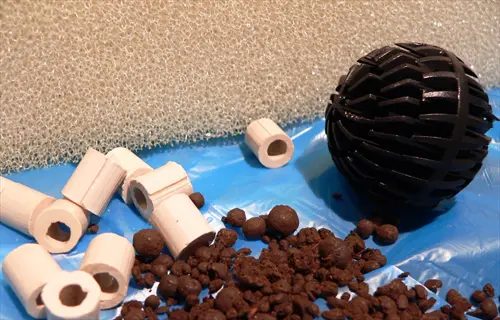
Seeded Filter Media
- Transfer established bio-media from healthy tank
- Instantly introduces nitrifying bacteria colonies
- Reduces cycling time by 50-70% in new setups
- Maintain in tank water during transfer to preserve bacteria
- Most effective natural cycling accelerator available
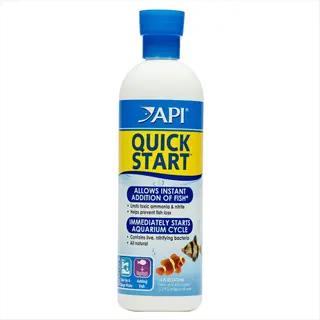
Bacterial Supplements
- Liquid cultures containing live nitrifying bacteria
- Choose refrigerated products for maximum viability
- Dose according to tank volume during initial setup
- Continue dosing for 7 days after ammonia spike
- Combine with ammonia source for optimal results
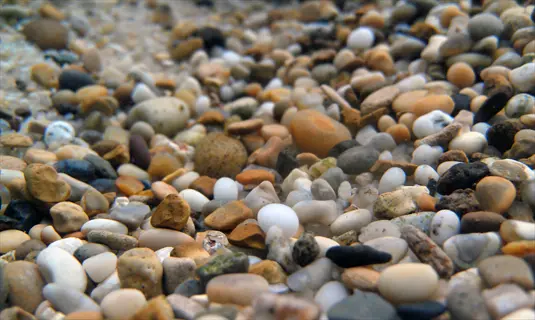
Substrate from Established Tank
- Transfer 1-2 cups of established tank substrate
- Contains beneficial anaerobic bacteria colonies
- Accelerates denitrification process in new setups
- Place in mesh bag for easy removal later
- Works best in tanks with similar parameters
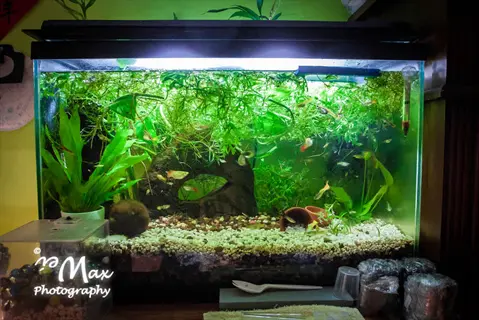
Live Plants
- Fast-growing species absorb nitrogen compounds
- Provide surface area for bacterial colonization
- Hornwort and duckweed rapidly reduce ammonia
- Use plant weights to anchor during cycling
- Require appropriate lighting for effectiveness
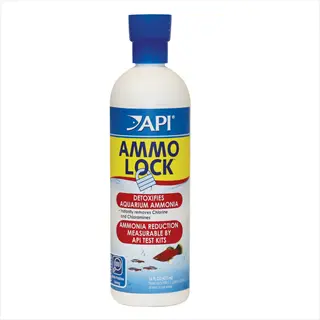
Ammonia Dosing Kits
- Provide controlled ammonia source for bacteria
- Precisely measure 2-4 ppm daily during cycling
- Prevents need for sacrificial fish during cycle
- Monitor levels with liquid test kits
- Discontinue when nitrites appear
Core Water Parameters Explained
The pH acidity is measured on a scale from 0 to 14, and changes in pH affect fish metabolism. The KH (carbonate hardness) will buffer or absorb the changes in pH like a shock absorber. The GH (general hardness) reflects the number of molecules of calcium and magnesium present, which are important in the formation of shells and bones. Each of the parameters directly affects osmoregulation and the functions of the enzymes.
Freshwater fish thrive at a pH level of 6.5-7.8, while saltwater species require a pH level of 8.1-8.4. Reef tanks demand higher KH (8-12 dKH) than freshwater setups (4-8 dKH). Saltwater calcium levels must hit 380-420 ppm, unlike freshwater's 10-30 ppm.
Parameters work together like the components of a coral reef system. Low magnesium can lead to calcium precipitating out. Not enough KH will destabilize pH, which stresses corals. I've seen tanks crash because one parameter destabilizes ALL other parameters. Balance matters more than any parameter being absolutely right.
Be on the lookout for symptoms indicating general imbalance. A low KH reacts in the form of a pH crash after feeding, and soft-water species may exhibit breeding problems when subjected to hard-water conditions (high GH). A common symptom of calcium deficiency is an indication of coral bleaching. Our helpful tables for recognizing visual symptoms will help you correct these imbalances quickly and effectively.
pH (Acidity/Alkalinity)
- Measures hydrogen ion concentration from 0 (acidic) to 14 (alkaline)
- Affects fish respiration efficiency and nutrient availability
- Freshwater fish thrive at 6.5-7.8, marine species require 8.1-8.4
- Daily fluctuations over 0.4 units cause chronic stress
- Plants consume CO₂ raising pH; organic decay lowers pH
KH (Carbonate Buffering)
- Measures carbonates/bicarbonates that neutralize acids
- 1 dKH = 17.9 ppm carbonate hardness equivalents
- Acts as pH shock absorber - low KH enables dangerous crashes
- Freshwater minimum: 4 dKH, reef tanks require 8-12 dKH
- Increased via crushed coral, decreased via RO water
GH (Mineral Content)
- Calcium and magnesium ions essential for biological functions
- Freshwater snails require 8+ dGH for shell integrity
- Soft water fish (tetras) prefer <6 dGH for breeding
- Measured in dGH (1 dGH = 17.8 ppm calcium/magnesium)
- African cichlids need 12-20 dGH for osmoregulation
Calcium in Marine Systems
- Critical for stony coral growth and crustacean molting
- Reef tanks consume 20-50 ppm calcium weekly
- Maintain 380-420 ppm with calcium chloride supplements
- Test twice weekly in coral-dominant systems
- Balanced with alkalinity (2.8 dKH per 20 ppm Ca)
Magnesium Balance
- Prevents calcium carbonate precipitation in saltwater
- Required at 1250-1350 ppm - 3x calcium concentration
- Depleted by coralline algae growth and water changes
- Low magnesium causes alkalinity instability
- Supplement with magnesium chloride/sulfate mixes
Parameter Adjustment Techniques
Whenever possible, opt for natural methods over chemical alternatives. You can add driftwood to lower the pH gradually or crushed coral to raise it. I stabilized my cichlid tank with limestone rocks instead of chemical buffers. These methods are slow but safe and can be done without shocking the fish.
Precise measuring of additives is essential. To increase KH, use baking soda at a rate of 1 teaspoon per 5 gallons. For raising calcium, add 1/4 teaspoon of calcium chloride for every gallon of water being treated for alkalinity. I keep measuring spoons that are never used for anything else and are assigned to aquarium use, so household accidents cannot happen.
Never go beyond safe limits of change. The pH should not change more than 0.2 units in a day, and the KH adjustment should not exceed 1 dKH per day. My cardinal tetras are dead because I changed the pH too quickly. Slow change is safe for the gill function and the biological filter.
Always wear gloves when handling chemicals in ventilated areas. Rinse up spills immediately. Never store your supplements alongside food. I learned this the hard way when reef additives stained my skin. Keep a water conditioner for emergencies in case an overdose occurs while making adjustments to the tank.
Raising pH and KH
- Add 1 lb crushed coral per 10 gallons to substrate
- For rapid adjustment: dissolve 1 tsp baking soda per 5 gallons
- Retest after 4 hours before adding more
- Avoid exceeding 0.2 pH unit change daily
- Monitor KH daily for 3 days after adjustment
Lowering pH Naturally
- Place peat moss in filter media bag (1 cup/20 gal)
- Use reverse osmosis water for 25% water changes
- Add driftwood which releases tannic acid gradually
- Test pH twice daily during adjustment period
- Combine with CO₂ injection in planted tanks
Increasing GH for Shellfish
- Add Wonder Shell per package instructions
- Use calcium sulfate at 1 tsp/10 gallons
- For shrimp tanks: target 6-8 dGH for optimal molting
- Mix crushed oyster grit into substrate
- Retest GH after 24 hours before redosing
Reducing Minerals in Soft Water Tanks
- Use 100% RO water for water changes
- Add peat filtration to canister filters
- Avoid limestone-based substrates
- Monitor TDS to stay below 150 ppm
- Acclimate fish slowly over 3-hour period
Reef Tank Mineral Balancing
- Dose calcium chloride to raise calcium 10-20 ppm daily
- Maintain 1250-1350 ppm magnesium with supplements
- Test alkalinity before calcium adjustments
- Use automated dosers for stable parameter maintenance
- Never adjust calcium without testing alkalinity
Saltwater-Specific Parameters
Specific gravity controls the osmoregulation underwater so fish do not dehydrate. Saltwater fish are continually losing water through their skin. Therefore, they drink seawater. The correct salinity maintains this systemic balance in the system. I retain my reef tank at a specific salinity level of 1.025 for optimal health and well-being.
Corals require trace elements, including iodine for tissue health and strontium for skeleton growth. Soft corals utilize iodine rapidly during the time of expansion, taking in this element in well-deserved abundance. Stony corals absorb strontium just as they absorb the building blocks for their skeletons. When my acropora faded because I hadn't added them, it was time for a proper supplement.
Coral reef systems require stricter measurements than do fish tanks. The corals require calcium at 420 ppm, while the fish only tolerate it at 380 ppm. Iodine must be almost 0.08 ppm for reef fish, but nearly 0.04 ppm for other fish. These differences must be known and understood before stocking.
Administer iodine on a weekly schedule using Lugol's solution. Aim for testing every two weeks. For strontium, use chloride supplements only once a month. I do after water changes when the level drops each time. Always measure before adding more, to avoid overdosing sensitive invertebrates.
Specific Gravity Management
- Measure daily with calibrated refractometer
- Top off evaporation with RO water only
- Maintain temperature at 77°F (25°C) during testing
- Adjust salinity slowly - max 0.001 change daily
- Use auto-topoff systems for consistent levels
Iodine Supplementation
- Test every two weeks with precision kit
- Dose Lugol's solution per manufacturer instructions
- Target 0.06-0.08 ppm for mixed reefs
- Observe coral polyp extension after dosing
- Reduce dosing if algae growth increases
Strontium Balancing
- Maintain 8-10 ppm for SPS-dominated tanks
- Use strontium chloride supplements weekly
- Test monthly with ICP or colorimetric kits
- Correlate dosing with calcium consumption
- Reduce if coralline algae growth slows
Potassium Control
- Test quarterly with ICP-OES for accuracy
- Dose potassium chloride to correct deficiencies
- SPS corals require 400+ ppm for vibrant colors
- Avoid exceeding 30 ppm monthly increase
- Monitor for tissue recession in acropora
Trace Element Systems
- Use balanced trace element solutions weekly
- Target natural seawater concentrations
- Reef tanks consume trace elements rapidly
- Combine with regular 10% water changes
- Test quarterly to prevent overdosing
5 Common Myths
To keep fish alive, aquarium pH must be an exact replica of the exact values found in their natural habitat
It is much better to keep the pH stable within safe ranges than it is to exactly reproduce the pH of the natural habitat. Fish are remarkably adaptable in recognizing stable conditions but very susceptible to physiological damage from quick changes in the pH. It is far healthier to keep all parameters in acceptable species-specific ranges with as little diurnal variation as possible than to attempt to obtain perfect but unstable relationships.
In an aquarium environment the accumulation of nitrate is completely safe and inflicts no injury upon aquatic life.
Chronic exposure to a concentration of nitrates in excess of 50 ppm progressively weakens the immune reactions of fish and engenders a chronic stress reaction. An increase in the concentration of nitrates gives rise to attacking growths of algae, and causes a decrease in the length of life of the invertebrates as well as a decrease in their reproductive faculties. It is necessary to make regular partial water changes in order to keep the nitrates at a concentration lower than the safe margin for the species and for their optimum welfare.
Carbonate hardness only matters for saltwater aquarium systems and isn't important for freshwater tanks
Freshwater aquariums critically require sufficient KH to prevent dangerous pH crashes from biological acids. The carbonate buffer system actively neutralizes acidic compounds produced by fish waste and organic decay. Inadequate KH enables rapid pH fluctuations that severely compromise gill function and stress all aquatic life regardless of salinity levels.
Any tap water is guaranteed to be safe for aquarium use without any type of preliminary testing or treatment
City water systems usually contain chlorine, chloramines or heavy metals, which are poisonous to fish and other aquatic life. Copper coming from the plumbing may kill all invertebrates and undetermined amounts of phosphate may be feeding obnoxious forms of algae. Total testing and conditioning of this water is very necessary before introducing this water to any type of aquarium environment.
Reverse Osmosis water automatically solves the water quality concerns of aquariums without the need for additives.
Pure RO water is void of the essential minerals required for proper osmoregulation and functioning of the aquarium bio system, and requires the careful remineralization of EC and GH/KH before use in the aquaism. If RO water is used with out treatment this can cause dangerous cases of osmotic shock and deficiencies in the micro and minerals level which can harm the fish.
Conclusion
Continuous observation is of more importance than any adherence to tabulated figures. Under normal conditions, fish perform better than when striving for perfection. I have kept angelfish in healthy condition in water with a pH of 7.5, which is generally recommended. Drifting far from normal gives no security to developed aquatic economies. Regularity will foster resilient aquatic economies over time.
Emphasize the biological stability , not particular numbers, as you would a puzzle's pieces in context. Low magnesium locks calcium from corals, while high nitrates promote algae growth that chokes plants. View your aquarium as a living, interconnected system.
Changes should be made slowly and within safe ranges. Adjust the pH by less than 0.2 units per day. Adjust the salinity by no more than 0.001 SG in 24 hours. My reef survived a salinity blunder over the course of a week. Patience is the sage's greatest weapon against imbalance.
Cultivate habits of preventiveness like weekly tests and partial water changes. Keep a record of parameters to detect trends. I keep logs to identify small changes before they become a problem. Consistent care prevents emergencies more certainly than drastic remedies ever will.
External Sources
Frequently Asked Questions
What are the essential aquarium water parameters to monitor?
Critical parameters include pH for metabolic function, ammonia/nitrite/nitrate levels from the nitrogen cycle, GH for mineral content, KH for pH stability, temperature for species-specific needs, and in saltwater: salinity, calcium, and trace elements.
How often should I test my aquarium water?
New tanks require daily ammonia/nitrite checks during cycling. Established freshwater systems need weekly nitrate/pH tests and monthly full parameter checks. Reef tanks demand calcium/alkalinity testing twice weekly and trace element tests monthly. Always test after major changes or fish illness.
Can rapid parameter adjustments harm aquatic life?
Yes, sudden changes cause severe stress. Limit daily shifts to:
- pH: ≤0.2 units
- KH: ≤1 dKH
- Temperature: ≤2°F (1°C)
- Salinity: ≤0.001 SG
- Gradual changes prevent osmotic shock and biological filter collapse
What causes unstable pH in freshwater aquariums?
Low carbonate hardness (KH) fails to buffer acidic compounds from:
- Fish respiration producing CO₂
- Nitrogen cycle generating nitric acid
- Organic decay releasing tannins
- Insufficient water changes
- Target 4-8 dKH to maintain stable pH levels
How do I safely lower aquarium hardness?
Effective methods include:
- Using reverse osmosis water for changes
- Adding peat moss in filter media
- Incorporating driftwood releasing tannins
- Avoiding limestone substrates
- Always acclimate fish slowly to new mineral levels
Are nitrate levels above 40 ppm dangerous?
Chronic exposure causes:
- Reduced fish immunity leading to disease
- Invertebrate reproductive failure
- Aggressive algae blooms
- Long-term organ damage
- Maintain below 20 ppm for sensitive species through regular water changes
Do saltwater aquariums require special parameters?
Reef systems demand precise:
- Salinity: 1.023-1.025 SG
- Calcium: 380-420 ppm
- Alkalinity: 8-12 dKH
- Magnesium: 1250-1350 ppm
- Plus trace elements like iodine and strontium for coral health
Can tap water be used directly in aquariums?
Untreated tap water contains:
- Chlorine/chloramines killing beneficial bacteria
- Heavy metals toxic to invertebrates
- Phosphates fueling algae outbreaks
- Always test and treat with conditioners
- Consider RO water for sensitive setups
How do live plants affect water chemistry?
Plants influence parameters by:
- Absorbing nitrates/phosphates as nutrients
- Releasing oxygen during photosynthesis
- Lowering pH through CO₂ absorption
- Providing surface area for beneficial bacteria
- Stabilizing environments when properly maintained
What are signs of water parameter problems?
Watch for:
- Fish gasping at surface (low oxygen/high toxins)
- Rapid gill movement (ammonia/nitrite poisoning)
- Loss of color/appetite (chronic stress)
- Algae explosions (nutrient imbalances)
- Immediate testing and correction is crucial
